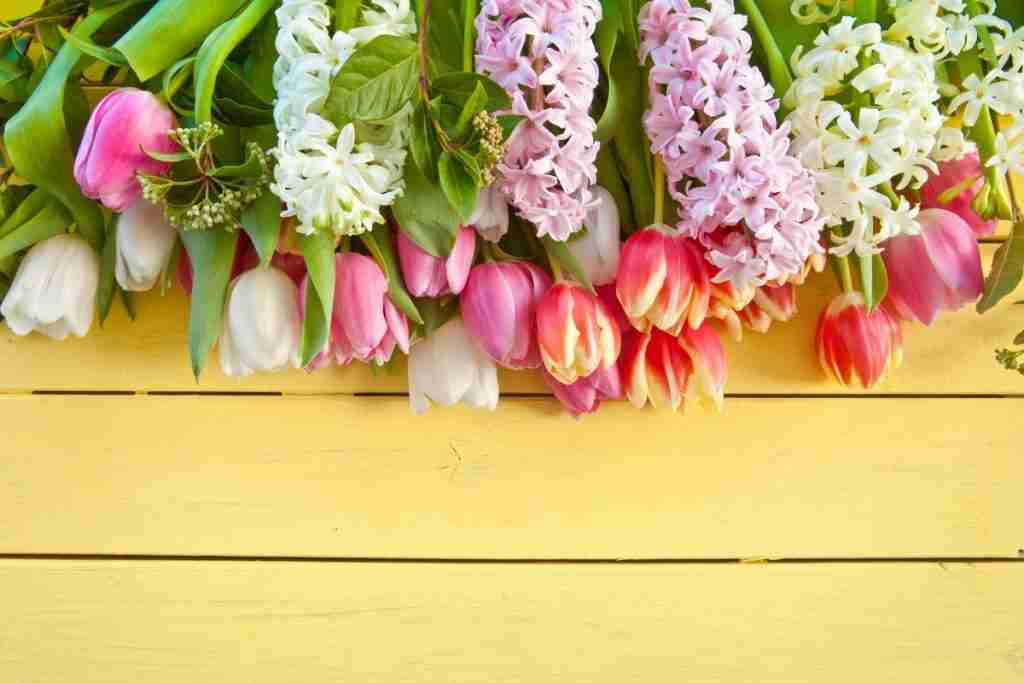
Are you looking for some gorgeous summer annuals to keep indoors and brighten up your space? Here are six colorful summer annual flowers for indoor use.
Table of Contents
1. Begonias
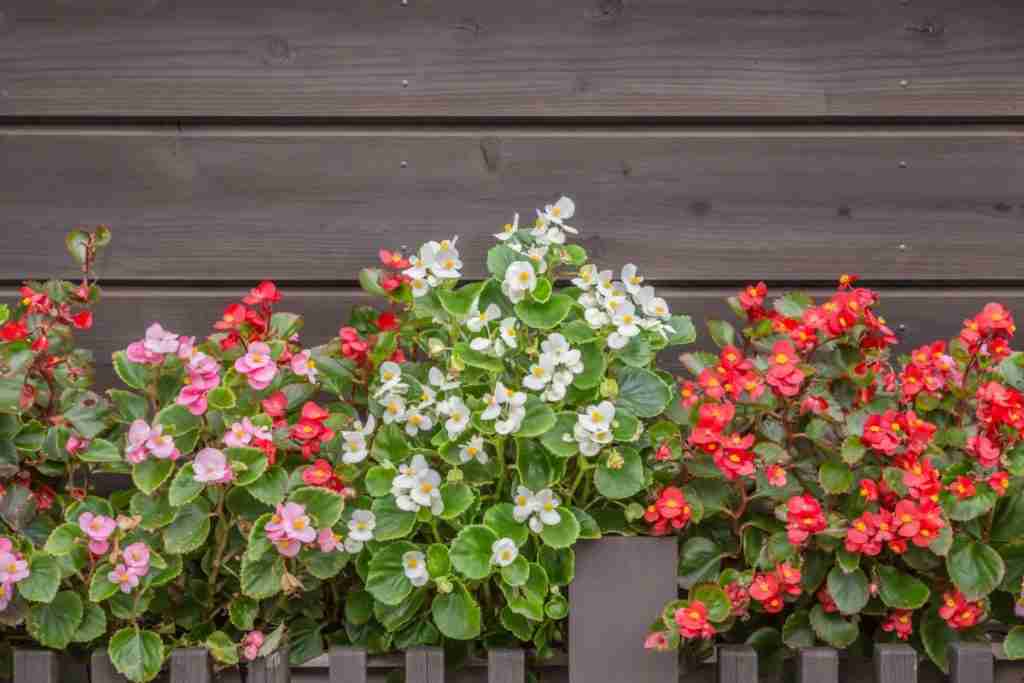
Begonias are a beautiful flowering plant that comes in various colors, most typically seen in pinks, reds, whites, and yellows. They can grow around 8-24 inches tall, with hybrid species that stay much shorter. If cared for properly, they can last the entire season.
How to Grow Begonias Indoors
If you want to keep some natural bright color in your house during the summer, begonias are a great way to go, and here are some tips on how you can do it.
- Lighting: Begonias require plenty of lighting, but it must be indirect. While you can’t keep your annual plant in a partial shade, it also can’t sit directly in front of the window sill. Keeping your plant basket hanging close by a window is a good choice. (Keep the temperature between 68-75° F.)
- Water: Begonias do not require tons of water to thrive. However, you should never allow the soil to become overly dry. Keep your plants in a location where they will not be over-exposed to moisture or added heat. Steer clear of heaters, humidifiers, and moist bathrooms.
- Proper potting: When potting begonias to keep them inside, you will want to get a container that looks like it might be just a little too small. Only repot in bigger containers if absolutely necessary. These guys like a tight fit and will grow best in a space where they are comfortable.
Common Problems with Begonias
These annual flowers are an excellent option for anyone looking to bring them indoors because they are fairly easy to care for and maintain. However, they come with their own set of issues to watch for.
- Fungal disease: Begonias are extremely susceptible to fungal disease and can quickly develop a severe issue if not watched and treated quickly. The best way to treat fungal disease in begonias is to treat it with an anti-fungal spray at the first sign of trouble and move the plant to a warmer, drier location.
- Over watering: As mentioned above, begonias do not require as much water as most other indoor plants and are frequently given too much water with soil that doesn’t have the best drainage, causing the plant to develop root rot and die.
2. Impatiens
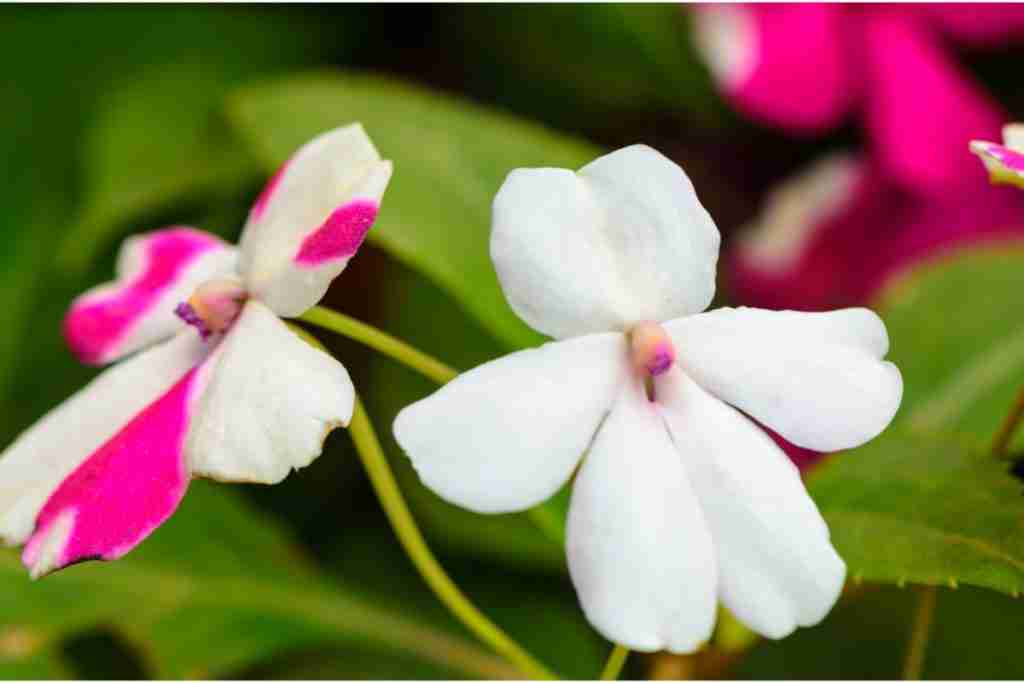
Inpatients are another beautiful flower that can grow well indoors–with the right tools and care, of course. This summer annual bloom grows to be around 8-24 inches tall and mainly comes in purple, red, and pink shades.
How to Grow Impatiens Indoors
Impatiens don’t require special care and will do great as long as you follow these three valuable tips.
- Lighting: Impatiens are fond of indirect light, so placing them somewhere south-, east-, or north-facing, out of the direct sun and in partial shade is ideal. Keep them at room temperatures between 65-70°F.
- Water: Impatiens love regular watering, so filling the pot about once a week is the best way to keep them growing strong. Fill the pot until the water drains through the bottom holes, then wait to do it again once the top of the soil feels dry.
- Proper potting: Impatiens love to stretch and grow in a flower bed, so you must provide them with a pot that gives them plenty of space. You also want a ton of drainage holes at the bottom to prevent the plant from becoming water-logged.
Common Problems With Impatiens
Some of the biggest issues you may experience growing these flowering annuals inside your home include insect infestation and disease.
- Insect infestation: Indoor impatiens are prone to insect activity, with the most common pests being aphids, mites, and thrips. Keep an eye out for these issues and treat them accordingly as soon as possible.
- Disease: Impatiens can develop bacteria that can lead to serious diseases, such as root rot and Botrytis blight.
3. Geraniums
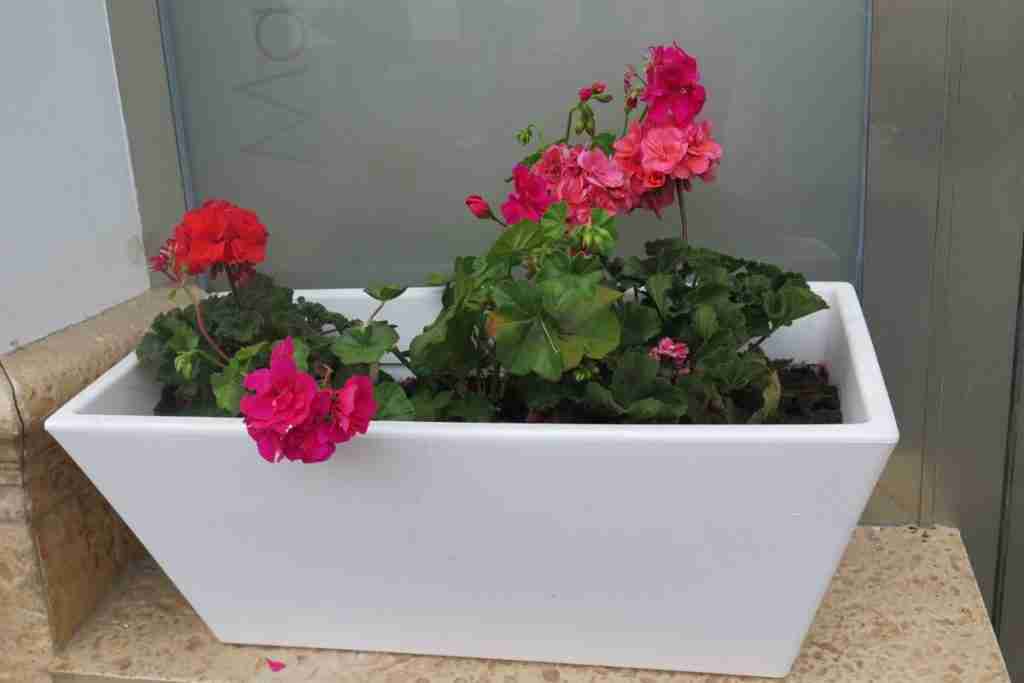
Geraniums are abundant bloomers that grow very well from early spring to late fall and even longer when potted indoors. Geraniums grow around 18-24 inches tall and usually have a red and pink flower color.
How to Grow Geraniums Indoors
While planting geraniums indoors is possible, it isn’t going to be as easy as some other options. These plants are particular about their environment and need plenty of heat and sunlight.
- Lighting: Geraniums are not afraid of the sun and like having access to tons of it as much as possible. Keep your planter on the window sill providing as much sunlight as possible, with indoor temps staying around 65-70°F.
- Water: Geraniums are well-known for being a drought-tolerant plant, which means it doesn’t require a lot of water to survive. Only add water to the pot when the soil seems completely dried out.
- Proper potting: Geraniums do well in a medium-size pot with plenty of drainage holes and loamy soil not big enough to block drainage.
Common Problems with Geraniums
The most common problems when growing geraniums indoors are issues with easy solutions.
- Lack of lighting: Geraniums need plenty of light to thrive; without enough lighting, these plants will wilt and die.
- Too much water: Like many other plants, too much water is never a good thing. Geraniums are very susceptible to root rot and fungal infection when too much water is present.
4. Kalanchoe
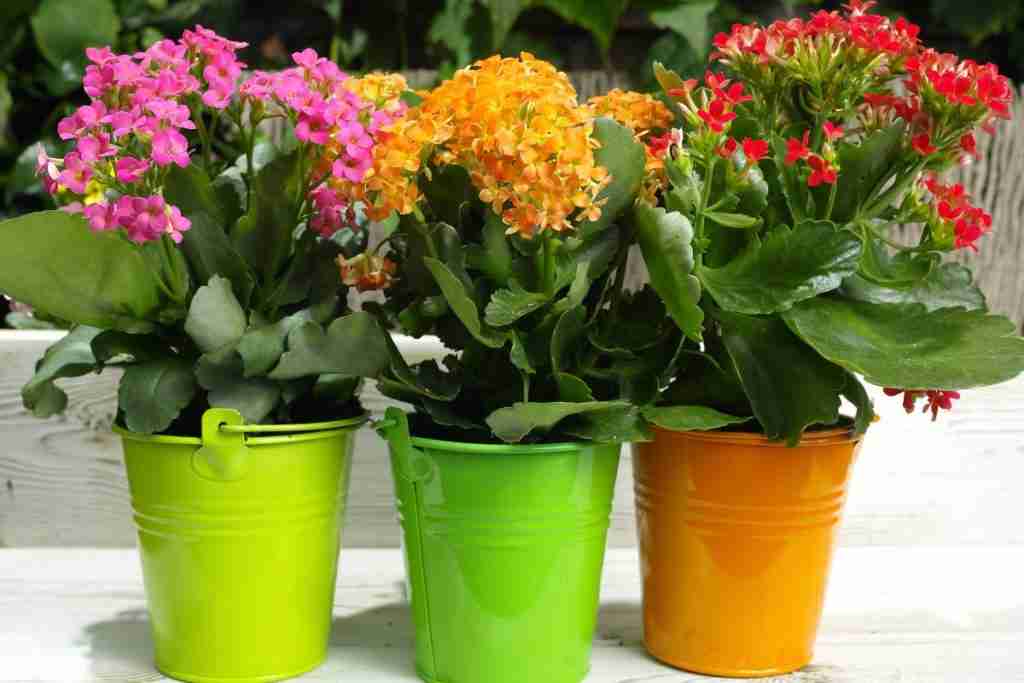
Kalanchoes are annual succulents that are simple to grow indoors and provide beautiful, small flowers in pink, white, red, and yellow shades. These plants typically grow to about 8-12 inches tall.
How to Grow Kalanchoe Plants Indoors
Here is some excellent information to help you grow beautiful, lush kalanchoe plants in your home during the summer months.
- Lighting: Kalanchoes love full sunlight and thrive well when placed directly in front of a window that will provide plenty of it. These guys do their best in homes with temperatures between 60°F and 85°F.
- Water: Because kalanchoes are succulents, they don’t need very much water to live their best life. Only offer water to the plant if the soil seems excessively dry, maybe once a week.
- Proper potting: Kalanchoes do not require tons of space and will do best in a small pot with plenty of drainage holes and sandy soil. They will also grow very well in clay or terracotta pots.
Common Problems with Kalanchoes
Kalanchoes are easy-to-grow plants that are even easier to care for. However, there are a few problems to look out for when keeping them inside your home.
- Pests: Aphids and mealybugs love kalanchoes and will munch on them until they die if not stopped as soon as possible.
- Too much water: Succulents require little water, so it is easy to overwater them, causing tons of issues and death.
5. Cape Primrose
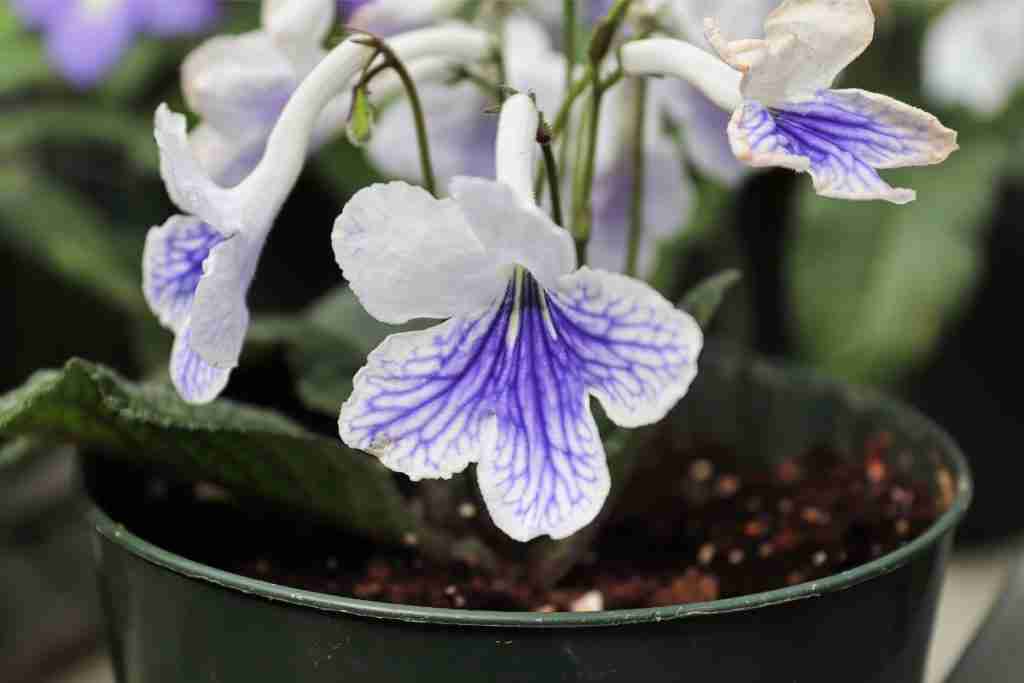
The cape primrose is considered an excellent option for beginners and is a reasonably inexpensive yet showy flower to purchase. They come in vibrant colors, with large 2.5 to 3.5 cm leaves.
How to Grow Cape Primrose Indoors
Here are a few tips to help you grow gorgeous primrose plants that will add to the decor in any space.
- Lighting: Your window sill is the best location for your cape primrose pot. These little guys love the sun and will do very well soaking it up for many hours a day. They also require temperatures around 65-75°F for optimal growth.
- Water: Cape primrose relies on plenty of water to grow and maintain its composure. Keep your plant well-watered, but refrain from overwatering it, or else it could become waterlogged. Rule of thumb: water once the soil looks like it is drying up. (Maybe try a self-watering system.)
- Proper potting: A compact pot is typically the best option for primrose plants. These flowers need an even mixture of soil, sand, and peat moss for proper growth.
Common Problems with Cape Primrose
Just because these flowers are fairly easy to grow doesn’t mean they don’t have some issues of their own. Here are some things to keep an eye on if you choose primrose as your plant of choice.
- Root rot: Primrose needs fresh soil, fertilizer, and proper watering because it is very susceptible to root rot.
- Powdery mildew disease: Powdery mildew disease can easily affect cape primrose, causing fungus to grow on the leaves quickly and making your plant ill.
6. Petunias
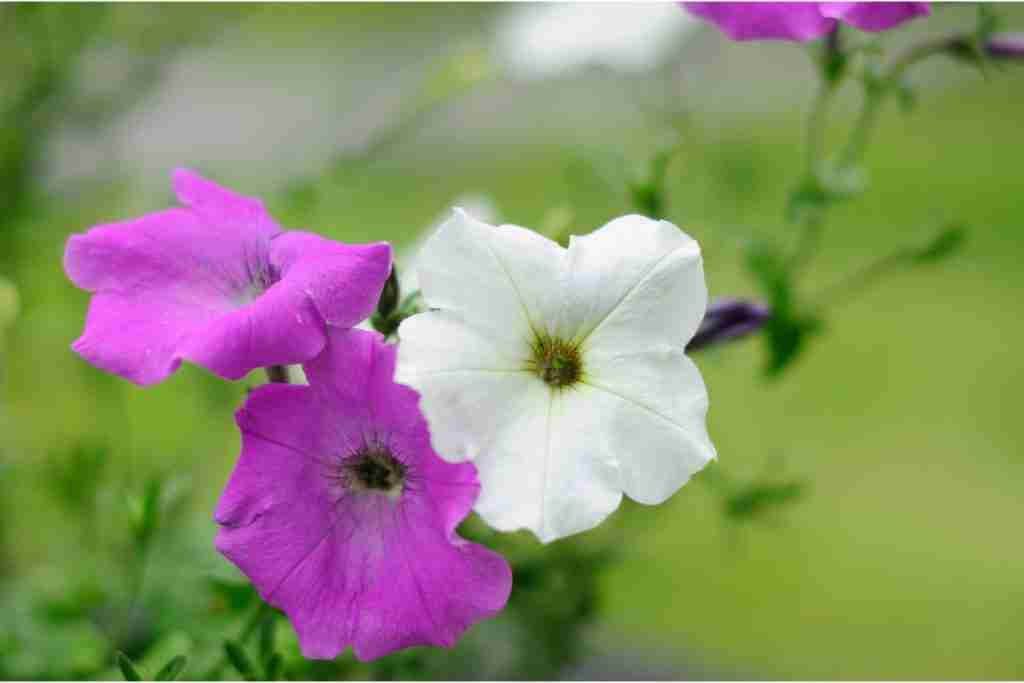
Petunias are a summer favorite in all households because of their beautiful large and colorful leaves. These plants are great for indoor growing and, topping out at around 8-12 inches tall, a petunia will provide a nice aesthetic to any room.
How to Grow Petunias Indoors
If you want a natural, enchanting, and fragrant feel inside your home, here are some ways to help keep your petunias happy and thriving.
- Lighting: Petunias require plenty of natural, direct sunlight. So keeping them on the window sill where they can get around 4-5 hours soaking up the sunrays is ideal. They are also very temperature-hardy and can typically grow in any home environment.
- Water: Because petunias are part of the succulent family, they do not require a lot of water and will thrive just fine with a good drink every week or so.
- Proper potting: Petunias do not like to be crowded, so make sure you give them plenty of room in a decent-sized pot so the roots have room to spread. You also want your petunias planted in sandy soil with plenty of drainage.
Common Problems with Petunias
To keep your petunias looking fabulous this summer, stay vigilant and keep an eye out for any signs of trouble.
- Nutrient deficiency: Petunias require nutrient-dense soil. Without it, you will notice the bright color begin to fade, and your plant will wilt.
- Mites: Mites are a common issue for petunias and will suck the life right out of them if given a chance.
Final Thoughts
Tons of great summer annuals Don’t have to be kept in outdoor garden beds and flower boxes. As long as you know how to care for your plants, these colorful blooms can thrive just about anywhere. Looking for some other options? Try planting sweet pea, black eyed susan, summer snapdragon, or Angelonia angustifolia.
